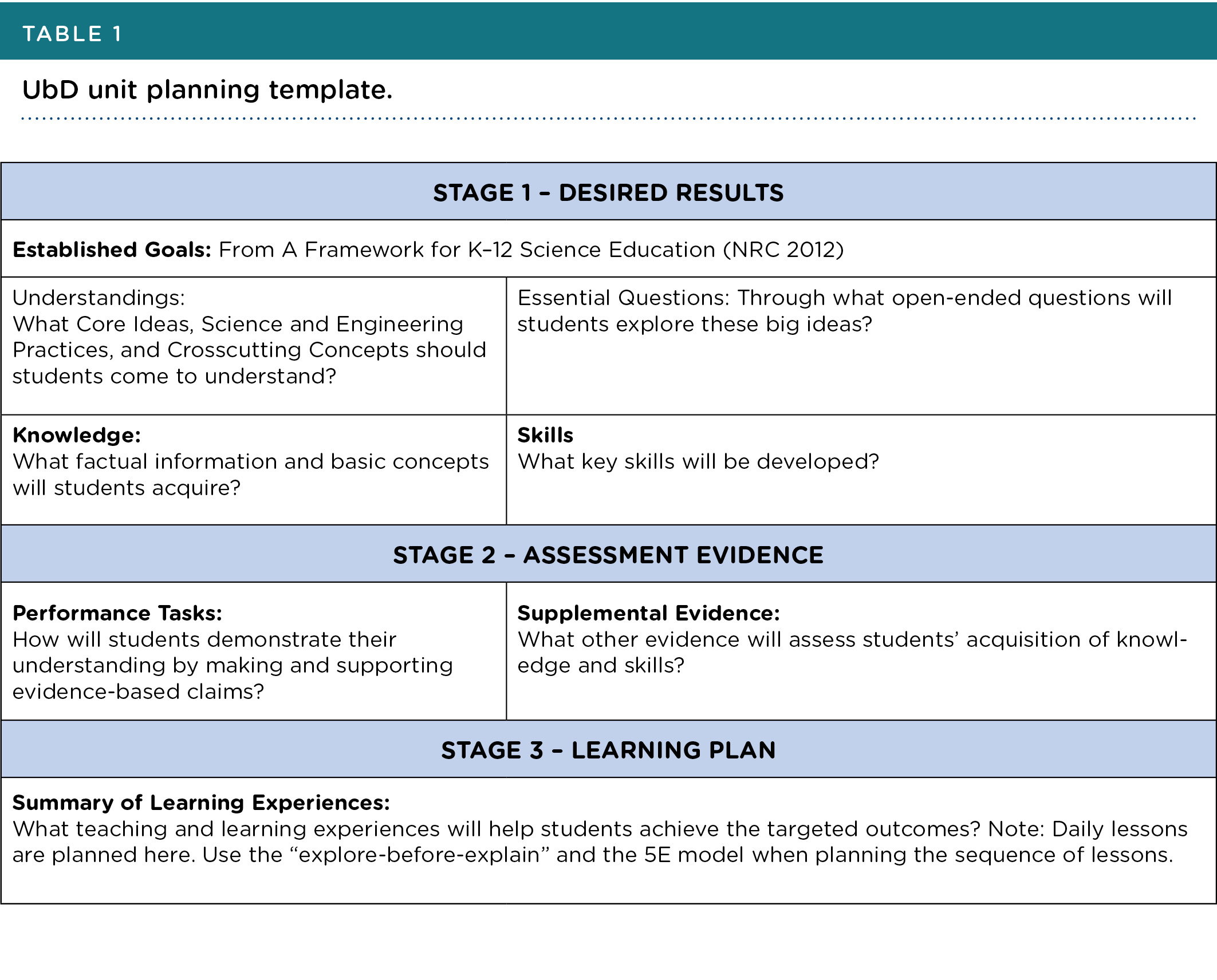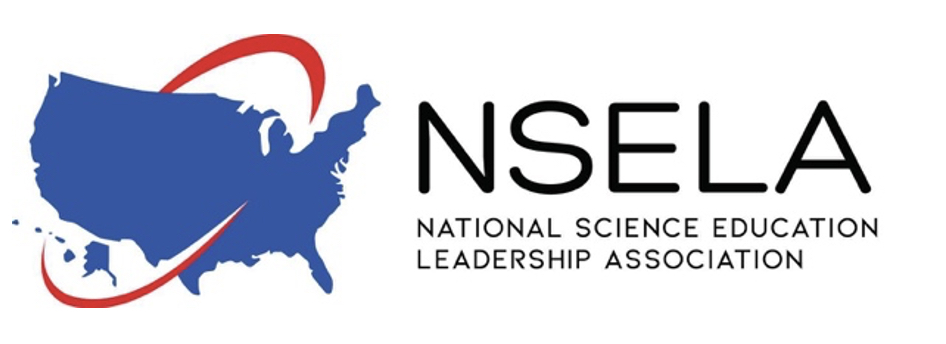Leadership Matters
Leadership Matters
Activating student learning through Explore-Before-Explain
Science and Children—July/August 2023 (Volume 60, Issue 6)
By Patrick Brown, Jay McTighe, and Rodger Bybee
In professional learning, we target the hands-on experiences teachers already use with students as the beginnings of rethinking instructional design. Next, we focus on the evidence-based claims students can make from the hands-on experiences. Students’ evidence-based claims become a key destination and the focal point of instructional sequence. With this key focus, teachers can develop preassessments that elicit students’ ideas and experiences and lead to evidence-based experiences. Similarly, students’ evidence-based experiences help teachers focus on the most essential and need-to-know information presented through discussions and readings and further elaborations. Teachers appreciate the process because it helps them prioritize the most salient aspects of curriculum design to ensure we promote more equitable, robust, and memorable experiences. In addition, the planning considerations help leaders build the capacity to create classroom experiences that are culturally relevant and accessible to every learner by starting with teachers’ skills and knowledge and elevating them to new levels through more purposeful practice.
Planning Engaging and Effective Science Lessons
In the following section, we offer four suggestions for curriculum planning, consistent with the Understanding by Design (UbD) framework (Wiggins and McTighe 2005), that apply the “explore before explain” for acting on this idea. For example, suppose you have identified students’ evidence-based claims as a key destination (evaluation). In that case, you pay particular attention to the exploration activities so that students can explain science directly from data that serves as evidence for understanding. Then, you could plan engagement, teacher explanations, and elaborations for a whole 5E experience (Bybee 2020). These lesson elements and their sequence underscore a fundamental point about achieving deep and lasting learning—students need to actively “make meaning” to come to understand abstract science concepts (McTighe and Silver 2020).
Plan “Backward”
Instead of beginning with traditional lessons and favorite activities, using Understanding by Design (UbD) procedures helps educational leaders identify the lesson and unit learning outcomes in terms of what would count as acceptable evidence and how students would have experiences to allow them to make more accurate scientific claims. In other words, both elements have to do with assessments. UbD emphasizes that units should focus on transfer goals that specify what students should do with their learning in the long run (Wiggins and McTighe 2005). (A generic UbD unit template is presented in Table 1.).

Identifying the desired evidence-based claims in planning helps focus teaching on developing students’ conceptual understanding and transfer of learning through purposeful science investigation and aligns with the goals of A Framework for K–12 Science Education and Next Generation Science Standards (NGSS) (National Academies of Sciences, Engineering, and Medicine 2022; NGSS Lead States 2013; NRC 2012). The only way students can arrive at an evidence-based claim is to use the unique combination of disciplinary core ideas, science and engineering practices, and crosscutting concepts. Here is the place to nest the science and engineering practices and crosscutting concepts.
If this suggested planning process is new to you, we suggest beginning with a unit topic that you already know well and is “tried-and-true” with students focusing on evidence-based claims and instructional sequence. From a backward design perspective, homing in on evidenced-based claims students can make from firsthand experiences in your existing practices encourages teachers to think like assessors and for students to explain the meaning(s) they have made from learning by doing science (Wiggins and McTighe 2005).
There are considerable interdisciplinary benefits to pinpointing evidence-based claims as evidence of learning. For example, students’ evidence-based claims serve as assessment evidence of informative/explanatory writing (advocated by the K–5 Common Core State Standards (CCSS) in ELA). Students also must use mathematical practices like measurement and data (advocated by the K–5 CCSS in Mathematics) (NGAC and CCSSO 2010). Connecting science to other areas develops deep understanding in authentic contexts and promotes transfer learning when an elementary teacher’s time may be limited (NASEM 2022).
Engage Students’ Ideas
Beginning new lessons with students’ ideas and experiences creates a “need-to-know” situation that sets up explorations for students. “Notice” and “wonder” talk and questioning routines can provide practical discourse frameworks that help engage students in questions and move to more equitable learning experiences for all students about science phenomena. Asking “what do you notice” invites uninhibited participation (i.e., not tied to fears of assessing ideas) and elicits students’ insights based on their experiences. Questions like “what do you wonder” are among the highest-yield instructional strategies since they focus the brain’s attention and set up a need-to-know (McTighe and Willis 2019). Using probing questions that reveal students’ thinking and experiences and can lead to evidence gathering. Finally, discrepant events help capture students’ natural inquisitiveness, questions, and problem-solving abilities. Starting lessons by engaging students’ ideas and experiences about culturally relevant phenomena makes learning accessible to all students and taps into their innate curiosities.
Enhance Understanding
Students often need enhancement activities to help them explain meanings they have made and transfer their learning to new situations. Teachers can plan for the essential scientific vocabulary and terms for concepts and processes related to students’ firsthand experiences that fill gaps from the explorations and are necessary for successful science understanding. Readings, discussions, and lectures become rich learning experiences because they connect ideas and students’ frameworks for understanding. The disciplinary core ideas, crosscutting concepts, and science and engineering practices from the Next Generation Science Standards (NGSS) are good places to start when identifying essential academic vocabulary for and developing classroom discussions (NGSS Lead States 2013) and when choosing trade books (see the NSTA outstanding trade book list at www.nsta.org/ostb23).
Promoting Reflection on Learning
Our planning should offer students opportunities to think about what they have learned and how far they have come intellectually—that is, engage in metacognition, which significantly affects learning (Bransford, Brown, and Cocking 2000). Evaluation from a learner’s perspective is tied to their sensemaking and provides a chance to assess how ideas have developed and determine strategies that lead to more reliable and valid evidence-based claims. Students should have opportunities to accurately self-assess (e.g., How well did I perform? What was most difficult? What grade do I deserve?). They should be able to reflect on their learning (e.g., What was most interesting or surprising about this (topic or phenomenon)? What strategies worked well for me during this learning experience? I used to think that __________, but now I understand that __________). Finally, students should set future learning goals (e.g., What will I try next time to improve? ). Studies show that students who engage in ideas inherent in the questions above develop strong metacognitive skills and are positioned to learn more and perform better than peers who are still developing their abilities to reflect on understanding (Wang, Haertel, and Walberg 1990).
Leading Change and Professional Learning
We have worked with many science educators, ranging from classroom teachers to science specialists who support teachers, and have been confronted with questions like “What would it take to accomplish learning growth for every student, every year?” and “What does it look like when students have developed deep conceptual understanding?” While we as teachers want the learning experiences to be seamless from a student perspective, consider that designing lessons can come from iteration (changing something that already exists) or invention (creating something original). Either iteration or invention is a great way to become an explore-before-explain teacher and honor teachers’ skills and experiences. Many teachers who already use hands-on find that they can scale their lessons by focusing on the key planning considerations. Others flip their instructional script and hone in on the most salient part of the lesson to make the best use of instructional time.
Patrick Brown (plbtfc@gmail.com) is executive director of STEAM for the Fort Zumwalt School District in O’Fallon, Missouri, and author of the bestselling NSTA book series Instructional Sequence Matters. Jay McTighe (jay@mctighe-associates.com) is an educational consultant in Columbia, Maryland, and author of the Understanding by Design series with Grant Wiggins. Rodger Bybee (rodgerwbybee@gmail.com), an educational consultant in Golden, Colorado, is the author of several NSTA books exploring the BSCS 5E model and STEM education.



